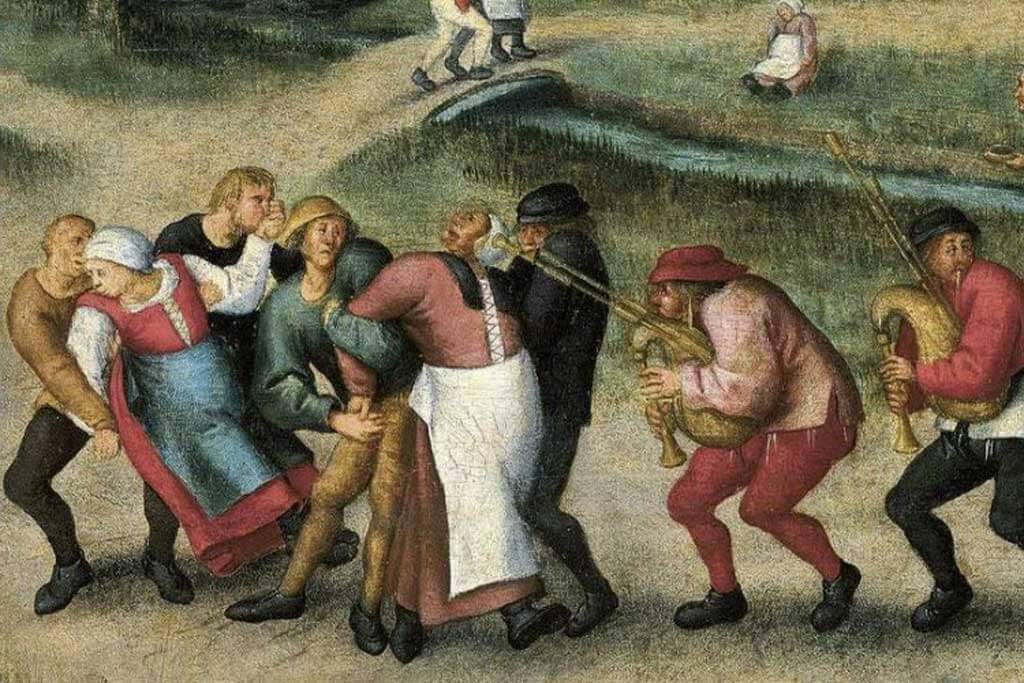In the summer of 1518, the Holy Roman city of Strasbourg witnessed an astonishing event that would bewilder historians for centuries to come—the outbreak of the “Dancing Plague.” Around 400 people found themselves caught in an uncontrollable dance, lasting for weeks on end, with a shocking death toll reaching up to 100. The perplexing nature of this epidemic and its mysterious origins continue to puzzle researchers even after 500 years.
The Enigmatic Dance Begins
On July 14, 1518, a woman named Frau Troffea emerged from her home in Strasbourg, France, and commenced an incessant dance. Hours passed, yet she showed no signs of stopping. Sweating and twitching, she finally collapsed in sheer exhaustion.

The next day, she was inexplicably compelled to dance again, and the inexplicable phenomenon seemed contagious. Soon, hundreds of locals joined the dance, creating a bizarre spectacle that endured for two seemingly interminable months.
Unraveling the Unfathomable
Despite limited historical records on the “Dancing Plague” or “dancing mania,” the accounts that have survived provide some insight into the peculiar epidemic. Frau Troffea’s persistent dancing led to severe exhaustion, yet she could not resist the urge to continue, leaving onlookers puzzled and attributing her condition to the devil’s influence.
In contrast, some believed that divine forces were at play, citing the lore of St. Vitus, a Sicilian saint known for cursing sinners with uncontrollable dancing mania when angered. Seeking absolution for her perceived sins, Troffea was taken to a shrine high in the Vosges Mountains, but the dancing persisted.
The Dancing Plague Spreads
The dancing plague rapidly spread throughout Strasbourg. Approximately 30 people replaced Frau Troffea, dancing with an intensity that seemed mindless. Soon, the number of afflicted individuals reached around 400, and the city streets became an unconventional dance floor.

Tragically, the relentless dancing took its toll. People succumbed to heart attacks, strokes, and sheer exhaustion, with as many as 15 deaths recorded daily during the peak of the epidemic. The death toll eventually reached about 100, leaving the city in mourning and disbelief.
Unraveling Fact from Fiction
While skeptics have questioned the credibility of the dancing plague’s accounts, modern historians have found enough evidence to support its occurrence. Historical records, including those by Paracelsus, a medieval physician, and Daniel Specklin, an architect, provide valuable corroboration. The city’s archives contain vivid descriptions of the epidemic’s impact.
Theories and Explanations of the Dancing Plague
Five centuries later, the cause of the dancing plague remains a subject of debate. One theory suggests that a psychotropic mold called ergot, found on damp rye stalks, might have caused delusions and spasms, including uncontrollable dancing. However, this explanation faces challenges due to other symptoms associated with ergotism.

An alternative hypothesis proposed by historian John Waller attributes the dancing plague to medieval mass hysteria. Strasbourg’s harsh living conditions, poverty, disease, and starvation could have led to stress-induced psychosis, triggering the outbreak of dancing mania. The supernatural beliefs surrounding St. Vitus may have further fueled the collective hysteria.
A Terrifying Conundrum
If the mass psychological illness theory holds merit, the dancing plague becomes a chilling testament to the intricate workings of the human mind. The council’s decision to turn the dancing into a public spectacle may have inadvertently amplified the epidemic by influencing susceptible minds.
What is the outcome of the Dancing Plague?
The Dancing Plague of 1518 endures as a captivating historical enigma, defying complete understanding even after half a millennium. Whether it was caused by psychotropic molds or mass hysteria, it stands as a haunting example of the profound complexities of the human mind and the unexpected chaos it can unleash.
FAQs
While ergot has been considered as a possible cause, its symptoms don’t entirely align with the observed behavior during the dancing plague.
Yes, there were at least 10 other outbreaks of dancing mania in regions near the River Rhine, where the legend of St. Vitus held significant influence.
Initially, the council encouraged dancing in an attempt to tire out the afflicted. Later, they resorted to penance and bans on music and dancing.
The exact reason for its cessation remains a mystery, but the combination of various factors might have contributed to its eventual end.


